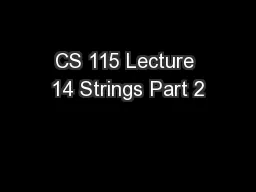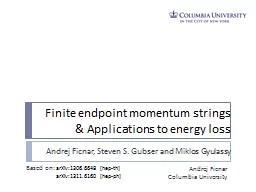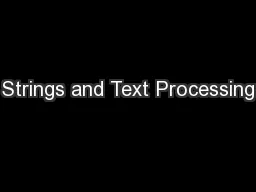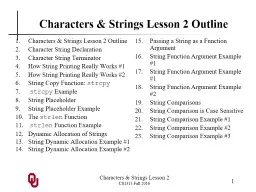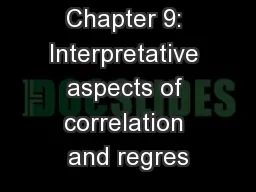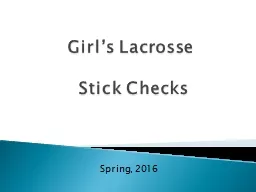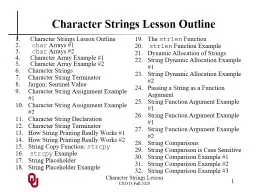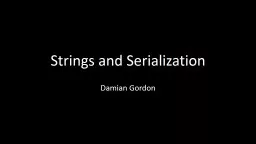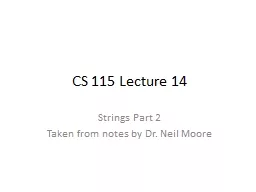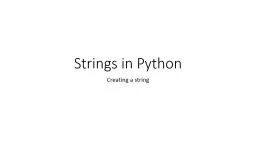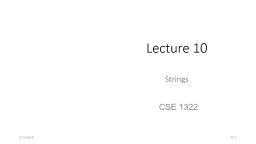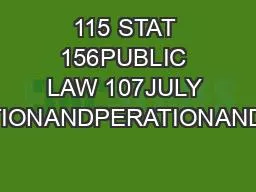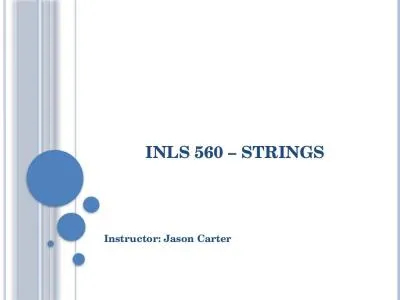PPT-CS 115 Lecture 14 Strings Part 2
Author : phoebe-click | Published Date : 2018-03-23
Taken from notes by Dr Neil Moore amp Dr D ebby Keen Strings to lists to strings There are two string methods which work with lists of strings split splits a string
Presentation Embed Code
Download Presentation
Download Presentation The PPT/PDF document "CS 115 Lecture 14 Strings Part 2" is the property of its rightful owner. Permission is granted to download and print the materials on this website for personal, non-commercial use only, and to display it on your personal computer provided you do not modify the materials and that you retain all copyright notices contained in the materials. By downloading content from our website, you accept the terms of this agreement.
CS 115 Lecture 14 Strings Part 2: Transcript
Download Rules Of Document
"CS 115 Lecture 14 Strings Part 2"The content belongs to its owner. You may download and print it for personal use, without modification, and keep all copyright notices. By downloading, you agree to these terms.
Related Documents

